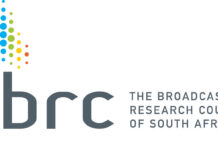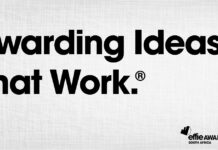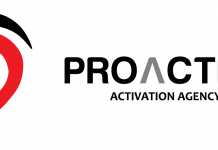Whether you’re leading a business or a business unit, or working as a freelancer, mastering business strategy is key to your success. And the end of a year and the start of a new one is a great time to create or revisit your strategy.
Here are 16 tips to help you with the process.
- Articulate your mission
Start with a powerful mission statement that is short, easy to remember, conveys the reason you are in business, is exciting and evokes emotion. It should encapsulate who you serve, what you do, and the outcome you are looking for. Your mission statement is focused on what you are doing today and on your purpose and reason for existing.
Mission statements typically answer the questions:
- What do we do?
- Whom do we serve?
- How do we serve them?
Here are some examples of powerful mission statements:
TED: “Spread ideas.”
Tesla: “To accelerate the world’s transition to sustainable energy.”
LinkedIn: “Connect the world’s professionals to make them more productive and successful.”
Nike: “To bring inspiration and innovation to every athlete in the world.”
A personal mission statement might look something like this: “My mission is to use my talent of writing/teaching/singing to uplift and inspire others.”
2. Develop your vision
While a mission is an aspirational guide and sets a direction, a vision statement inspires you to set specific goals and accomplish certain things for tomorrow; your vision is about what you would like to achieve in the long term.
To demonstrate the difference, compare Google’s mission statement (“to organize the world’s information and make it universally accessible and useful”) with its vision statement (“to provide access to the world’s information in one click”).
3. Define your values
Reflect on your brand values and what you stand for as a business. They should define how you conduct your business, especially in difficult times. If, for example, one of your values is “integrity”, and you act with dishonesty, your brand value will be badly eroded. Typically, a values statement will contain three or four values sets, such as “integrity, reliability and transparency”, “our people are our greatest asset” and “leadership and innovation” (these are the values of Flow Communications, where I work). You can then break those down further to inform how you will implement them, by stating, for example, under the first value set of “integrity, reliability and transparency”:
- “We pride ourselves on the quality of our work
- We deal with our clients, our stakeholders and our people with the utmost transparency
- We acknowledge mistakes honestly and without defensiveness, and rectify them promptly”
(See Flow’s full mission, vision and value statement here: https://www.flowsa.com/about.)
4. Map out your business strategy
Ideally, map out your business strategy on a single page. This is sometimes called a “business model canvas (BMC)”, and there are several free templates available on the internet (for example, this one from Strategyzer on medium.com).
Your strategy should encompass all aspects of your business, including your mission, competitive landscape, key partners (e.g. suppliers), key activities, value proposition, important resources, customer segments, channels to market, cost structure, revenue streams and impact.
5. Think short, medium and long term
It’s a good idea to develop separate one-year, three-year and five-year strategies. The one-year strategy should be the most fleshed out, with specific goals – for example, increases in revenue or profitability, development of people and culture, the introduction of new products and services, and so on.
Your strategy should define your business goals clearly, according to SMART (specific, measurable, achievable, realistic and time-bound) objectives.
6. Conduct research
Good strategy is informed by research. What are your competitors doing better than you? What areas of your business should you hone, change or grow? Are there ideas for new products and services you could easily develop? Are some of your services and products ageing and losing their relevance, which might give you insight into how to allocate resources in the future? What are clients asking for that you aren’t giving them?
7. Consider your positioning
It’s a common business assumption that you can’t be the best and the cheapest – you need to decide whether you position your business on price or on quality. There are also other aspects to positioning – if you are delivering services, what are you especially good at? The way you position your products or services in relation to one another is also important.
I recently wanted to order canvas prints of some photographs and followed a link to a page where it looked like the company excelled in supplying these. But when I clicked through to the rest of its website, the company had many other unrelated printing services, which made me doubt if they were really specialists in canvas prints. I ended up choosing another supplier.
8. Know your target markets
Part of doing a BMC as described above is understanding your different target markets. At Flow Communications, for example, we have government clients and corporate clients. In our context, the government buyers are usually looking for the best price, while corporate clients are more concerned with quality. A government client has a much greater need for compliance and documentation; a corporate client for capacity to get the work done. Both have different anxieties, hopes and triggers, and it’s important that we position ourselves slightly differently, depending on which we are pitching to.
9. Identify strengths and weaknesses, opportunities and threats
It’s never a waste of time to do a SWOT (strengths, weaknesses, opportunities and threats) analysis on your business, business unit, product or service. Strengths and weaknesses are internal (for example, an experienced team would be a strength, while poor leadership in a particular area would be a weakness); opportunities and threats are external (an opportunity would be a change in tax law that allows you to export a product more cheaply to a neighbouring country, while a threat might be a poor national or international economy).
Read more about how to conduct a good SWOT analysis and download a free template from this link from Forbes.
10. Define the channels you will use to reach your target audiences
Different products and services will perform better on different channels, and different channels – or a combination of different channels – will reach different audiences better than others. TikTok, for example, is a good platform to interact with a young audience when promoting something light-hearted, while the fastest growing audience on Facebook now is older people.
Direct marketing will work for some things, while influencer marketing might work for others. Channels are constantly changing and developing, and may even be counter-intuitive. For several years, for example, Flow has successfully sold a large number of airline tickets for a client off Instagram – perhaps not the first channel one might think an airline would turn to.
11. Get buy-in
No matter how brilliant your strategy is, if you can’t get others to see it, believe it and live it, it won’t mean a thing. Ideally, it’s best to build strategy through consensus, so that there are more champions than just the leader, giving it a greater chance of success. Identify key influencers in your organisation who you can lobby. You don’t necessarily need to have a majority to see the benefits of the strategy, but just enough changemakers or influencers believing in it, thus creating a tipping point for widespread belief.
12. Communicate your strategy widely
Just because you know your strategy so well you could recite it on Shark Tank in a one-minute pitch doesn’t mean your team knows the strategy. Communicate, communicate, communicate. Repetition (without being boring or preachy) is important. I recently asked the sales team I lead, towards the end of our financial year, what our revenue and sales targets were for the year, and none could answer me accurately. I had foolishly assumed that because I lived with these figures in my head that they had memorised them, too.
13. Develop a detailed action plan
It’s one thing to develop a strategy, and another all together to implement it. You’ll need to develop a detailed action plan or plans to bring it to life. These plans should include priority issues, aims and metrics for measurement, steps to take, resources required, roles and responsibilities for people, including who will ultimately be accountable for what, and what the impact will be once you achieve the strategy. At Flow, for example, our five-year strategy is to double our revenue and improve our profit line, while doing purpose-led work. We aim to do this to make our company even stronger and more sustainable, to ensure we can retain and attract excellent employees and so that we can make a positive difference in the world.
14. Stay focused
To ensure you stay focused on achieving your strategy, appoint project leaders and teams to focus on different aspects. Create deadlines and set specific metrics. Track your progress regularly and report on it regularly (depending on the metrics, this could be daily, weekly, monthly, quarterly or annually). Hold people accountable.
15. Never forget your customers
While your focus needs to stay sharp on achieving your strategy, never become so inward-looking that you forget your customers. Without them, you have no business. You should be talking to them regularly, listening to their feedback, and weaving this back into your strategy.
16. Adapt your strategy
A strategy isn’t meant to sit in a file gathering dust; it’s a living document that you need to change as conditions and your business change. Review it often (perhaps once a quarter), and adapt it as you learn. As is often quipped, your strategy needs a strategy!




















































































